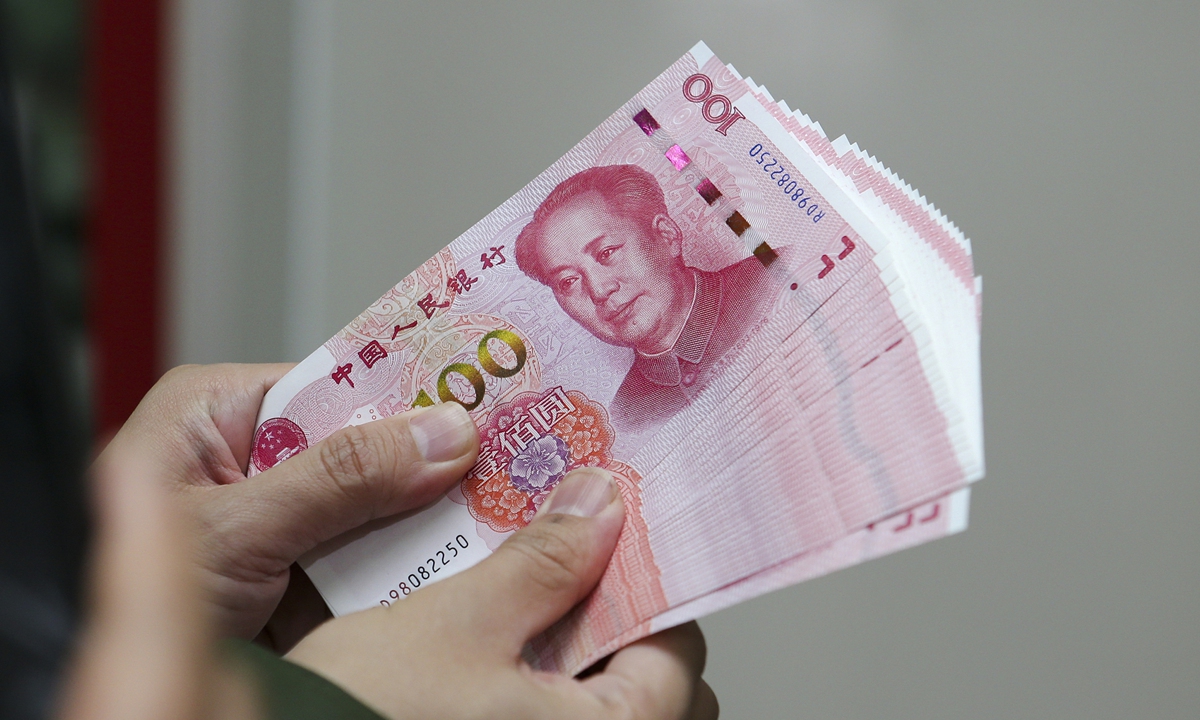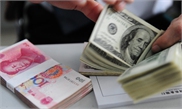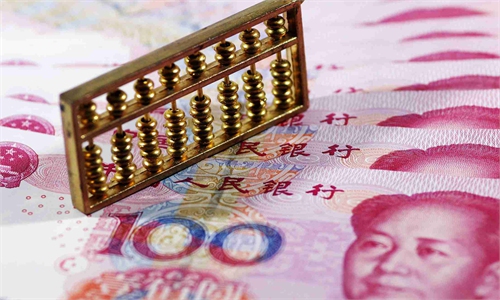Major joint-stock Chinese banks cut yuan deposit rates to support domestic consumption, investment
Move to support domestic consumption, investment: experts

RMB Photo:VCG
A number of Chinese joint-stock banks moved to cut their yuan deposit rates on Monday, following similar cuts by major state-owned banks on June 8. Industry analysts said the cuts will ease margin pressure on banks and help inject liquidity into the real economy.
Major banks including China Merchants Bank, Pingan Bank, China CITIC Bank, SPD Bank and China Everbright Bank announced to cut their rates on yuan deposits starting from Monday, the Global Times learned.
Similar to the large state-owned banks, interest rates on demand and term deposits were cut across the board, with medium- and long-term time deposit rates dropping by as much as 15 basis points (bps).
For instance, according to the announcement by the China Merchants Bank, the demand deposit rate fell from 0.25 percent to 0.2 percent. The rate on three-year deposits was cut to 2.45 percent from the previous 2.60 percent, while the rate on five-year deposits dropped to 2.50 percent from the previous 2.65 percent.
On June 8, major Chinese state-owned banks including Commercial Bank of China, Agricultural Bank of China and Bank of China lowered their yuan deposit rates.
The interest rate cuts affected both demand and time deposits, and reductions for medium- and long-term deposits were as much as 15 bps.
The last time that China's large state-owned banks and national joint-stock commercial banks collectively adjusted their deposit rates was in September 2022.
"Cutting deposit rates within less than one year is aimed at reducing the cost of bank liabilities," Tian Yun, former vice director of the Beijing Economic Operation Association, told the Global Times on Monday. More importantly, the move will nudge lenders to inject more liquidity into the market to back up domestic consumption and investment, which will shore up economic growth, Tian noted.
Between January and April, the country's retail sales increased 8.5 percent year on year to top 14.98 trillion yuan. Tian said that recent policies will support consumer confidence, and the data will be stable in the next few months.
Dong Dengxin, director of the Finance and Securities Institute of Wuhan University of Science and Technology, told the Global Times on Monday that the move will release massive savings into the capital market and consumption, which will boost the real economy.
Data from the People's Bank of China (PBC), the country's central bank, showed that in the first quarter, total yuan deposits increased by 15.39 trillion yuan ($2.15 trillion). Household deposits increased by 9.9 trillion yuan.
PBC Governor Yi Gang said on June 7 during a symposium with representatives from domestic and foreign companies and financial institutions in Shanghai that the bank will enhance "counter-cyclical" policy adjustments to fully support the real economy as well as lower its costs.
Tian said that the latest round of market-based adjustments to deposit rates by large banks was made in response to changes in market supply and demand, as well as the banks' own operating conditions. The situation indicates that the role of the market-based adjustment mechanism for deposit rates continues to function effectively.
More small and medium-sized banks are anticipated to follow suit in the coming days, analysts said.
In April 2022, the PBC established a market-oriented adjustment mechanism for deposit rates. The central bank's move prompted banks to make reasonable adjustments in line with changes in market rates.
Zou Lan, a senior PBC official, said on April 20 that through the self-regulatory mechanism, large banks will take the lead in adjusting deposit rates according to changes in market conditions.
Small and medium-sized banks will make supplementary adjustments according to their own circumstances, which is conducive to maintaining market competition, safeguarding the stability of the banks' liabilities, and enhancing the ability and sustainability of supporting the real economy.


